(Beaugency 1900 - Périgueux 1995)
The grape harvest, from a 16th century tapestry
Oil on canvas (burlap type)
H. 170 cm; L. 100 cm
Signed and dated upper left 51
Provenance: Collection Monsieur et Madame Jean-Louis Gallet
It was surprisingly in the Loiret, in Beaugency, that Maurice Albe was born on January 15, 1900. Child of the beginning of the century, he quickly moved to Périgord around 1905, where his father took over the management of the Sarlat gas plant. Child of the country, his parents being from Quercy, he will know the joys of the Périgord Noir countryside, playing between the old chestnut trees on the arid hills where the rock is outcropping. It is also thanks to his uncle, Canon Edmond Albe, that the young Maurice will see the Sarladais under his patrimonial side. Surveying the hills steeped in history and retaining the image of peasants working the land, the cultural education provided by this monk will deeply anchor the future artist in his land. The first years of artistic studies will take place in Paris after the First World War, where he will meet the most famous artists of the 20th century. Long days on the terraces of Montparnasse will see him rub shoulders with Picasso, Braque, Juan Gris, Lurçat and above all André Lhote, to whom his work will owe so much. These years of training will continue in particular at the Ecole Estienne, holy of holies in the book trades. Previously he went through the ABC school of drawing. This arts magazine will then offer him his first publications, since he signs the cover of a 1925 issue with an engraved wood representing Périgord. It was the beginning of a very long career as an illustrator and creator, since he exhibited his woodcuts throughout his career, and received orders from many writers or publishers to image their works. Two people were very important in his life; the historian of Périgord, Abbé Georges Rocal, whose Albe will illustrate a dozen works and will follow the advice of this great connoisseur of the customs and countryside of our country, and Eugène Le Roy, the famous Périgord writer, notably author of Jacquou le Croquant, which the painter will illustrate twice in his career. Admirer of the latter for his descriptions of the country and his vision of the peasant world, Albe will even head the association of Friends of Eugène Le Roy in 1963 for many years. A third man also counted a lot in the existence of the painter, in the person of Pierre Fanlac, creator of the editions of the same name. Its presses located near the Tour de Vésonne in Périgueux have produced many high-quality works illustrated by Maurice Albe. After his round trips between Paris and the Sarladais, Maurice Albe settled in Périgord in 1946, where we will see his style evolve drastically towards what he himself called "figurative cubism". This partitioning technique can now be found in all his works, engraved as well as painted, which generally derive from one another. Knocked-out peasants at rest in front of a village with heavy stone roofs, an old chestnut tree still full of life, a country market from which gossip escapes, a goose girl with a penetrating gaze, are very popular subjects and not very suitable for an artistic staging at first sight. Yet Albe will bring all the possible harmonies to it in his very particular style, having had the chance to receive numerous orders from Périgord institutions, but also regular joint exhibitions with his Parisian painter friends, allowing him to sell his paintings all over the world. . Maurice Albe will also be a drawing teacher in several establishments in Périgueux, both school and leisure, establishing a link with a whole generation, transmitting to it his passion for Périgord and the know-how accumulated throughout a career of seventy-five years. At the end of his life he was still rewarded for his work and left a few days before his ninety-fifth birthday.
In 1951, Albe made this "copy" of part of a famous tapestry, most certainly following an order. The original passed on the looms of northern France or Belgium between 1500 and 1530 is now kept at the Cluny Museum. Maurice Albe uses here a canvas with a very wide weft, giving the appearance of the tapestry, which he comes to paint, without varnishing the final result to preserve the matte appearance of the fabric. This piece was joined by another tapestry copy made in 1954, most certainly commissioned by collectors and friends of the painter, Jean-Louis Gallet and his wife. She was with several dozen pieces by the painter at the home of this former French teacher at the Saint Joseph high school in Périgueux, also a historian and writer.


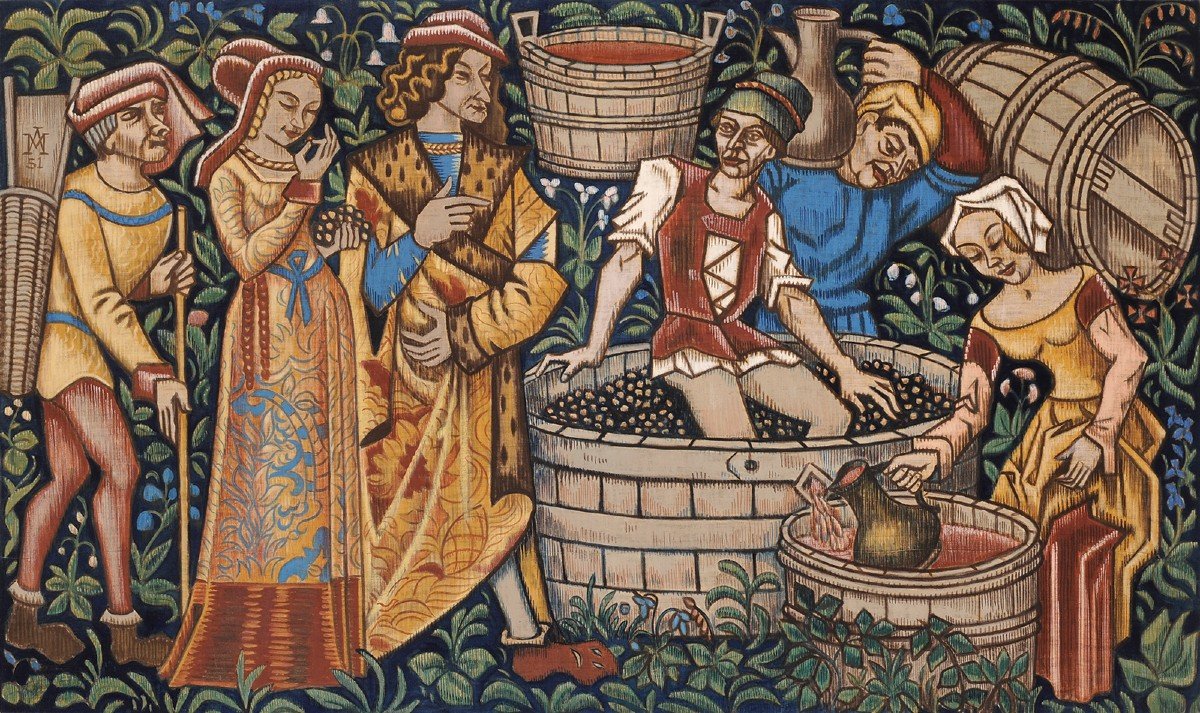
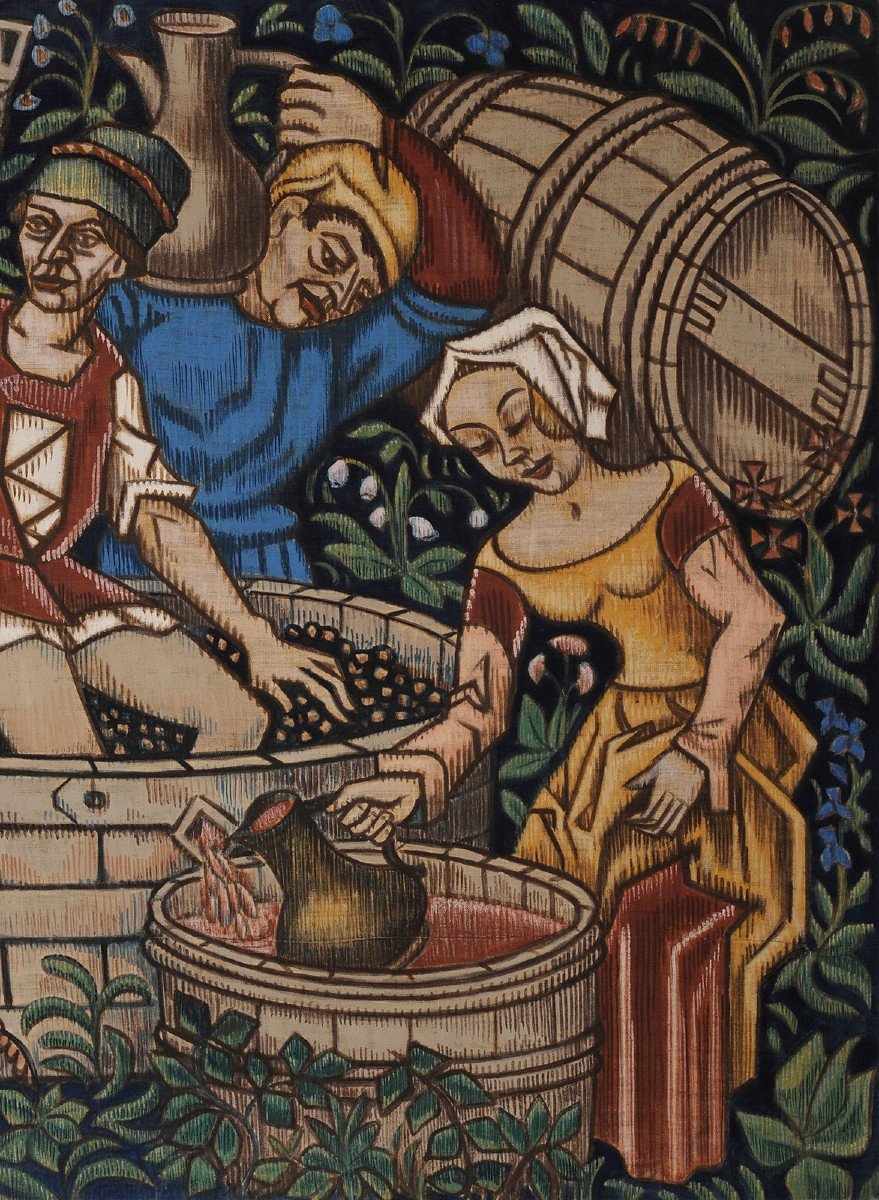
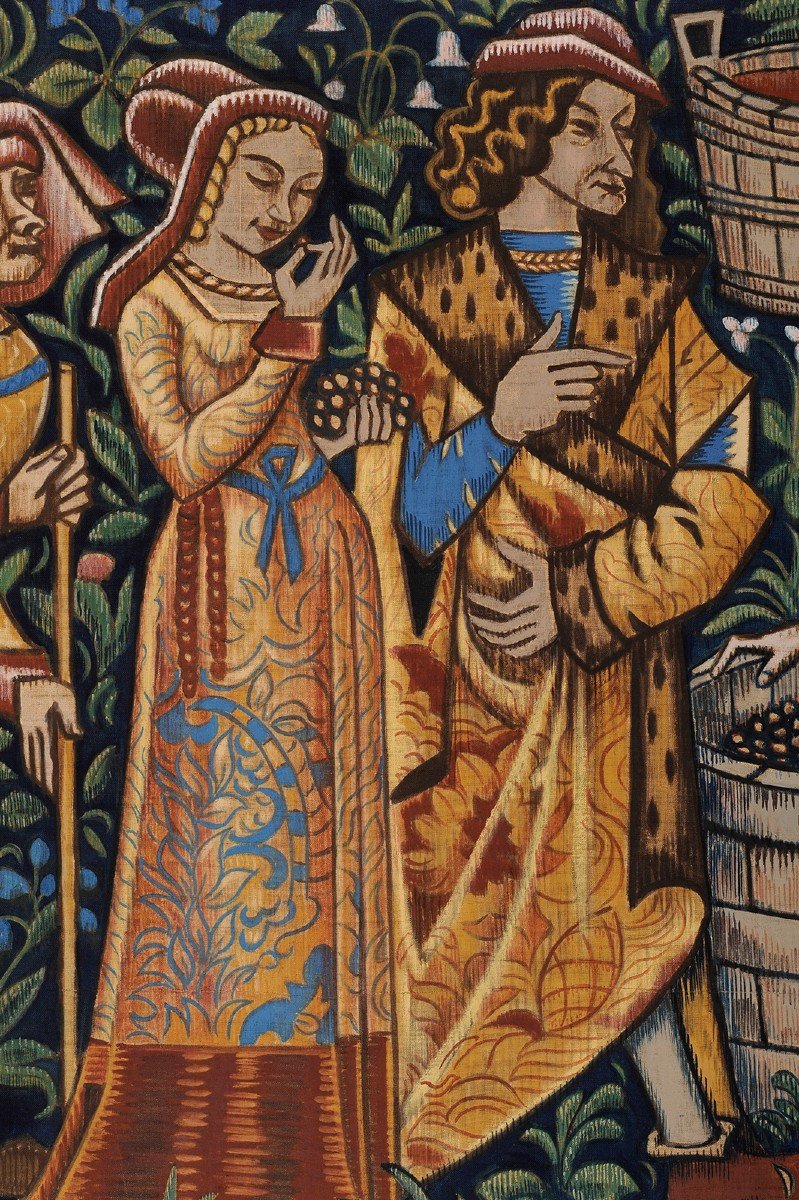
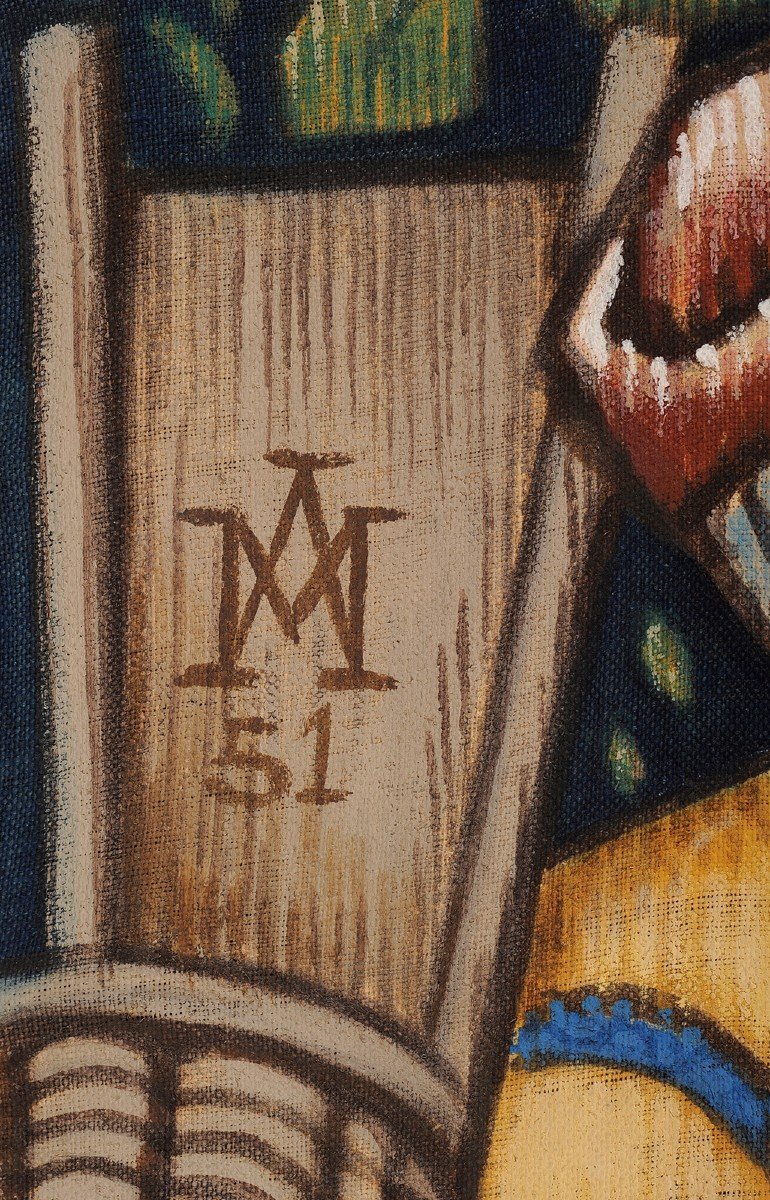






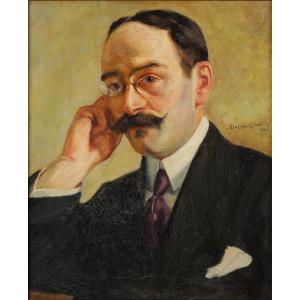
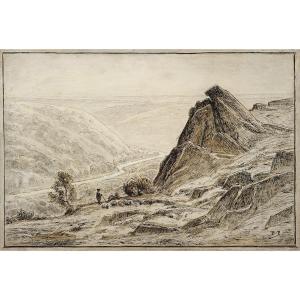
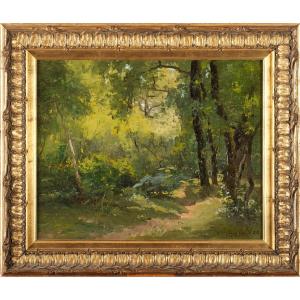


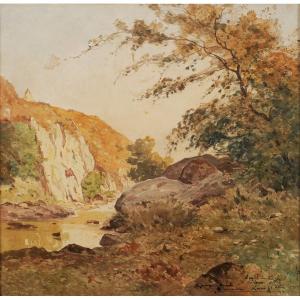






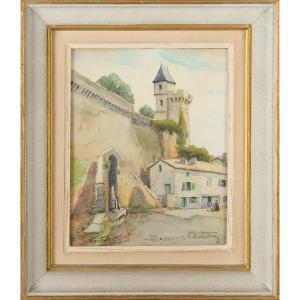

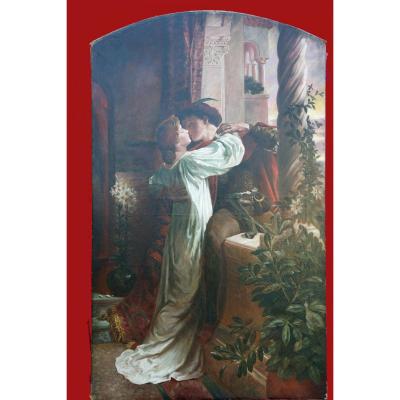



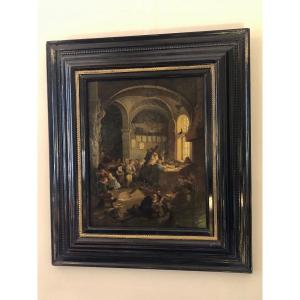



 Le Magazine de PROANTIC
Le Magazine de PROANTIC TRÉSORS Magazine
TRÉSORS Magazine Rivista Artiquariato
Rivista Artiquariato